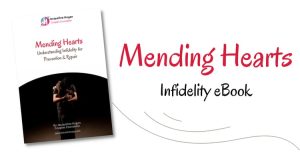How Trauma Can Affect Your Window of Tolerance
The term “Window of Tolerance” was coined by Dr. Dan Siegel and is now commonly used to understand and describe normal brain / body reactions, especially following a traumatic event.

It’s a concept I think everyone can relate to, and the graphic below does a great job at explaining in further detail what happens when you are outside your window of tolerance, or ‘comfort zone’.
As you can see on the top of the graphic is the volcano, this relates to your fight or flight responses. This state can occur from anger, threats, uncertainty, loss of control etc.
At the bottom of the graphic is the iceberg, this area relates to your freeze responses after stress or traumatic events. States include feeling ‘spacey’, disconnected, numb, zoned out etc.
Taking Control of Your Window
Interesting though on each sides of the window of tolerance are things that can widen your window of tolerance and also shrink it.
Stress & Trauma
Stress and trauma shrinks your window of tolerance. You can imagine the compounding effect of small stressors adding up over time, or a single large traumatic event, such as a car crash, bush fire, relationship breakup, loss of a loved one, legal dispute etc.
Related Resource: What’s Your Brain Gauge Telling You
Resilience & Emotional Management
The good news is there are active ways to widen your window of tolerance or keep it open, even under stressful or traumatic circumstances. The work I do everyday with clients is around:
- Widening your window of tolerance
- Building resilience to keep it open.
- Having the ability to return to your comfort zone / window of tolerance from a heightened or low state of arousal.
As challenging as heightened emotions can be after a traumatic event, the ability to think clearly / rationally, or being creative is hampered in a ‘hyper / hypo aroused’ state. I’m sure you can relate to this and have experienced this before at some level. For example, being unable to perform your job properly after a traumatic emotionally disruptive event.
It’s worth mentioning at this point how for some people emotional states can stay ‘on’ or come back to affect you at a later time. PTSD for example is common in the defense force, but also in local law enforcement, emergency services and other high pressure jobs and industries too.
Training and education are critical in these roles, however for ‘everyday people’ having the knowledge and practical skills to use in your life on a daily basis can be extremely beneficial.
Experience the Benefits of Emotional Self Control
Who wouldn’t want to be consistently:
- Less stressed
- Clear thinking, efficient & effective
- Calm, happy, relaxed
- Creative, kind
- In control
- Helping others
Sounds good doesn’t it! What would this mean in your life?
Could it lead to…
- Happier relationships
- Happier kids / calm, functional family
- Better work / career opportunities
- Relaxed, fun and enjoyable friendships and social life
- Better resilience and confidence to everyday ‘life’ events
What else?
Living In Your Window of Tolerance
Optimal Response & Keeping Your Window ‘Open’
Look at the graphic below. Over time, living within your window of tolerance is achieved through regulating your emotions, responding effectively and pushing your boundaries.
Strategies to regulate your emotions include having the ability to self soothe and live with a level of self-awareness to choose your responses, rather than reacting. There are many techniques you can use, including grounding exercises, breathing exercises, mindfulness, meditation, visualisation, self compassion activities and exercises to name a few.
When an unexpected traumatic event occurs in your life, having a way to return to your ‘normal state’ is essential. Problems can occur for you, (or a partner) if you feel stuck and unable to return to your ‘normal window’ naturally or easily on your own. What makes this ‘return’ even more difficult is that when you are in a hyper / hypo alert zone you can’t think clearly, making it even more difficult to self-regulate.
Do you try to resolve relationship problems with your partner in a hyper-alert state? You probably don’t have much luck in getting a great outcome do you?
Working through problems while in your window of tolerance, where you are both thinking clearly is going to a far more effective strategy than trying to resolve an issue or get your point across in a hyper-alert zone.
Related: Relationship Happiness For Couples
Looking at the graphic below – does this feel familiar at different times in your life?
What are your go to exercises or resources to find your way back to your comfort zone?
Do you practice self compassion? What’s self compassion look like in your life?
How do you get yourself out of a rut if your feeling blue, suffered a loss, or feel stuck in a depressive state? Do you have specific exercises, people and strategies to call on to lift your mood into your ‘window of tolerance?’
Just recognising your current state and remembering the concept around your ‘window of tolerance’ is a great first step. You’ll be able to say to yourself:
“I’m so mad right now, I’ve smashed right through my window of tolerance”. “I know I’m upset, and not thinking clearly” Before I do anything I’ll later regret, I’m going to allow myself to deflate from this heightened state. Let me start with taking a break and doing that grounding exercise”….
Strategies to Return to Your Window of Tolerance
Practical Strategies to Regulate Your Emotions & Behaviour
Fight / Flight
To de-escalate from a heightened fight / flight response state, activities and exercises you can do include:
- Exercise and physical activity
- Gardening, cleaning, tinkering, hobbies, etc to give your mind a break
- Soothing music
- Soothing touch and comfort, such as massage, warm bath
- Self care, a favourite meal, movie, or friend to talk to
- Feeling safe, blinds closed, doors locked with a blanket
- Journalling, expressing your emotions (appropriately!)
- Sleep, rest and relaxation
- Grounding exercises
- Mindfulness & Meditation
- Therapeutic exercises, Counselling
Freeze
To lift from a frozen response state, activities and exercises you can turn to include:
- Stimulating the senses
- Delicious, healthy meals
- Activity and movement, walking, cycling, gardening or fitness etc
- Reading, challenges and problem solving
- Social interaction, talking with friends, co-workers, partners and therapists
- Trying something new
- Travelling
- Taking a “risk”
- Being creative, eg painting, writing, designing
- Therapeutic exercises, reconnecting with your Life Values, Counselling
What works for you? What are your go-to strategies?
Make a note of them right now.
Choosing how you respond to stimulus everyday and regulating your emotional response is key to living a happy functioning life. We are doing it everyday, mostly on autopilot, however practice makes perfect, so the more you practice self-awareness and implement exercises that work for you the better you will become at being ‘cool, calm and collected’.
Knowing your defense mechanisms, will help you identify opportunites to grow, and strategies to stay in your optimal zone of you window of tolerance.
Related: Five Questions That Make You Emotionally Strong
Think about your favorite sports star or even ones that make the headlines for the wrong reasons. The best remain calm and collected under extreme pressure and provocation from the opposition. The slip ups that make the news highlights are when they have slipped into a heightened state and are not thinking clearly. Usually displayed by saying stupid things or lashing out in their behaviour. While it may be entertaining and soon forgotten off the sports field; in your personal life the effects can linger and last a life time.
The work I do with my clients in session and the resources I develop helps build resilience – widens your window of tolerance, and gives you the best strategies that work for you to take control of your life and live in your window of tolerance.
Below are two simple exercises you can try right now and keep up your sleeve to use any time you need.
Two 'Go-to' Exercises Remember
1. ‘Lean Back’ – Basic Grounding Exercise
Try this basic grounding exercise now and ‘file it away’ in your mind ready to use the next time you are feeling under stress, threatened or angry.

Purpose
This exercise uses your body and postures to inspire self-awareness in the moment and to help with your initial impulse control.
If you tend to ‘snap back’ or ‘fly off the handle’ to a threat – than this exercise could work wonders for you, to actively choose a better response.
Instruction
Notice the feelings you are witnessing in your body. What are they, can you name them? For example – tension, frustration, energy.
Next, notice your body posture. Are you leaning forward, or pacing? Are your muscles tight and is you expression tense?
It’s time to lean back…
Stop what you are doing and shift your body posture backward. Feel the heels of your feet on the ground and lighten the load on the balls of your feet. If you sitting lean back in your chair and feel the chair on your back. Rest your head on the headrest if you have one. You can even put your arms in the air and your hands behind your head like you are relaxing on a lounge chair, poolside at a luxury resort.
This posture will invoke a calming mindset and give you a moment to breathe. By opening your chest you have dropped your defenses and the mind will follow suit.

Relax your eyes and take several deep breaths. As you breathe allow yourself to notice what you see in front of you in ‘widescreen’. Take in the whole vista in front of you without straining your eyes or focussing on any particlar object.
Slowly scan around the room or landscape you are in and just notice what you see, all while holding your ‘leaning back’ stance or posture.
Continue breathing slowly and do this for one to two minutes.
Notice how your body is reacting, notice your thoughts – and follow the shift in mood toward your window of tolerance.
How do you feel? More in control to react better, in a smarter way?
Remember: You don’t have to wait for a major incident or threat to do this exercise. You can use it on a daily basis if you like, to take the ‘edge’ off micro stresses or micro threats you experience throughout the day. Try it and see how you go.
Related Resource: How to Say No
2. Healing Hands – Basic Self Soothing Exercise
This simple exercise is most comfortable in the privacy of your own home, but you can do similar versions at your desk, or while you are out and about.

Purpose
By deliberately touching a specific area of your body you are directing attention and focus to that area. By touching an area of discomfort, that might carry pain or tension you are indicating to your body – let’s learn more about this area, can I ease the tension here?
Instruction
Identify an area on your body that deserves your attention.
Calm your mind, by taking two or three slow breathes and shift your mind to that area of your body.
Next, gently place your hand on that area and ensure your touch is slow, soft gentle and nurturing. In this example we will place our hands over our belly. notice the sensations on your hands, listen with your hands. What is your body telling you?

Keep the touch for one to two minutes, listening to your body, and being mindful of your experience. Let your mind read and process the sensations that you are feeling.
If you like you can let your mind speak to your belly and communicate what you need. For example you could send a message of ‘calm’ to your belly.
Breathing slowly, calm and relaxed, mindful of your experience, notice what you are feeling and enjoy the experience.
After a couple of moments notice how you are feeling and move your attention to a new area or simply return your awareness back into your day.
Related Resource: Breaking Bad Habits Video Series








